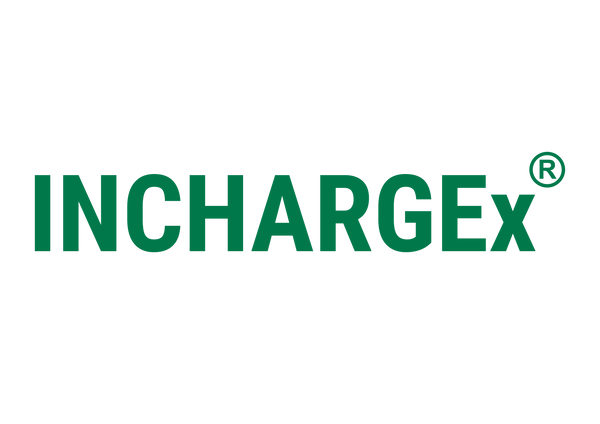Hyundai Ioniq 5 Charge Spec and Overview
Hyundai Ioniq 5 Charge Spec and Overview
The Hyundai Ioniq 5, released in late 2021, is Hyundai's first model built on the E-GMP (Electric Global Modular Platform). This all-electric SUV comes with both rear-wheel-drive and all-wheel-drive options, offering multiple battery configurations. Competitors include the Kia EV6 and Tesla Model Y.
Battery Capacity
Hyundai Ioniq 5:
- Standard Range: 58 kWh (54 kWh usable)
- Extended Range: 77.4 kWh (74 kWh usable)
- N Series: 84 kWh (80 kWh usable)
Energy Consumption (WLTP Test Cycle)
- Standard Range (RWD): 16.7 kWh/100 km
- Extended Range (2WD): 17 kWh/100 km
Driving Range
-
Standard Range (58 kWh):
- WLTP: 384 km
- EPA: 354 km
-
Extended Range (77.4 kWh):
- WLTP: 507 km
- EPA: 488 km
- N Series (84 kWh): WLTP TBC
AC Charging Max Rates
- Single-phase: 7.4 kW max
- Three-phase: 11 kW max
DC Fast Charging
The Hyundai Ioniq 5 supports DC fast charging using the CCS2 connector:
-
Max DC Charging Speed:
- Standard Range: 175 kW
- Extended Range: 233 kW
- Charging from 0 to 80% in 15-18 minutes
Approximate Charging Times
| Charging Method | Standard Range | Extended Range |
|---|---|---|
| 10A Powerpoint | 24 hours | 37 hours |
| 15A (Caravan Outlet) | 15 hours | 20 hours |
| 32A (1-phase Home EVSE) | 7.5 hours | 10 hours |
| DC Fast Charging (50kW) | 55 minutes | 1.5 hours |
| DC Fast Charging (250+kW) | 15 minutes | 18 minutes |
Performance
-
Max Power:
- Standard Range (RWD): 125 kW
- Extended Range (RWD): 168 kW
- AWD: 239 kW
- N Series: 478 kW
-
Acceleration (0-100 km/h):
- Standard Range (RWD): 8.5 seconds
- Extended Range (RWD): 7.3 seconds
- AWD: 5.1 seconds
- N Series: 3.4 seconds
Dimensions and Storage
- Length: 4635 mm
- Width (mirrors out): 2152 mm
- Height: 1605 mm
-
Boot Volume:
- 531 L (seats up)
- 1591 L (seats down)
- Front Boot (‘Frunk’): 57 L (RWD) / 24 L (AWD)
Towing Capacity
- Standard Range: 750 kg (braked/unbraked)
- Extended Range: 1600 kg (braked) / 750 kg (unbraked)
Disclaimer
The information provided above is intended as a general guide only. Specifications and charging times may vary. Always confirm details with the manufacturer before making any purchase decisions.
Blog posts
View all-
Australia's EV Market Heats Up: Chinese Brands ...
Did you know that four Chinese carmakers have just cracked Australia's top 10 sales list for the first time, while Tesla sales take a dip? This shift signals a new...
Australia's EV Market Heats Up: Chinese Brands ...
Did you know that four Chinese carmakers have just cracked Australia's top 10 sales list for the first time, while Tesla sales take a dip? This shift signals a new...
-
PHEVs vs. BEVs: Why Going Fully Electric Wins i...
Did you know plug-in hybrids now snag 5% of new car sales in Australia, potentially slowing the pure EV revolution? But with BEVs plateauing at 9%, savvy drivers are ditching...
PHEVs vs. BEVs: Why Going Fully Electric Wins i...
Did you know plug-in hybrids now snag 5% of new car sales in Australia, potentially slowing the pure EV revolution? But with BEVs plateauing at 9%, savvy drivers are ditching...
-
Australia's EV Road-User Charge: What It Means ...
With EV sales smashing records at 9.3% of new cars in Australia, is the looming road-user charge a hidden speed bump? Don't let it slow you down—discover how this policy...
Australia's EV Road-User Charge: What It Means ...
With EV sales smashing records at 9.3% of new cars in Australia, is the looming road-user charge a hidden speed bump? Don't let it slow you down—discover how this policy...
-
Australia's EV Infrastructure Surge: Portable C...
With EV sales skyrocketing to nearly 10% of new cars in Australia, are infrastructure lags holding you back? Fear not—portable chargers are stepping in to keep you powered up anywhere,...
Australia's EV Infrastructure Surge: Portable C...
With EV sales skyrocketing to nearly 10% of new cars in Australia, are infrastructure lags holding you back? Fear not—portable chargers are stepping in to keep you powered up anywhere,...

